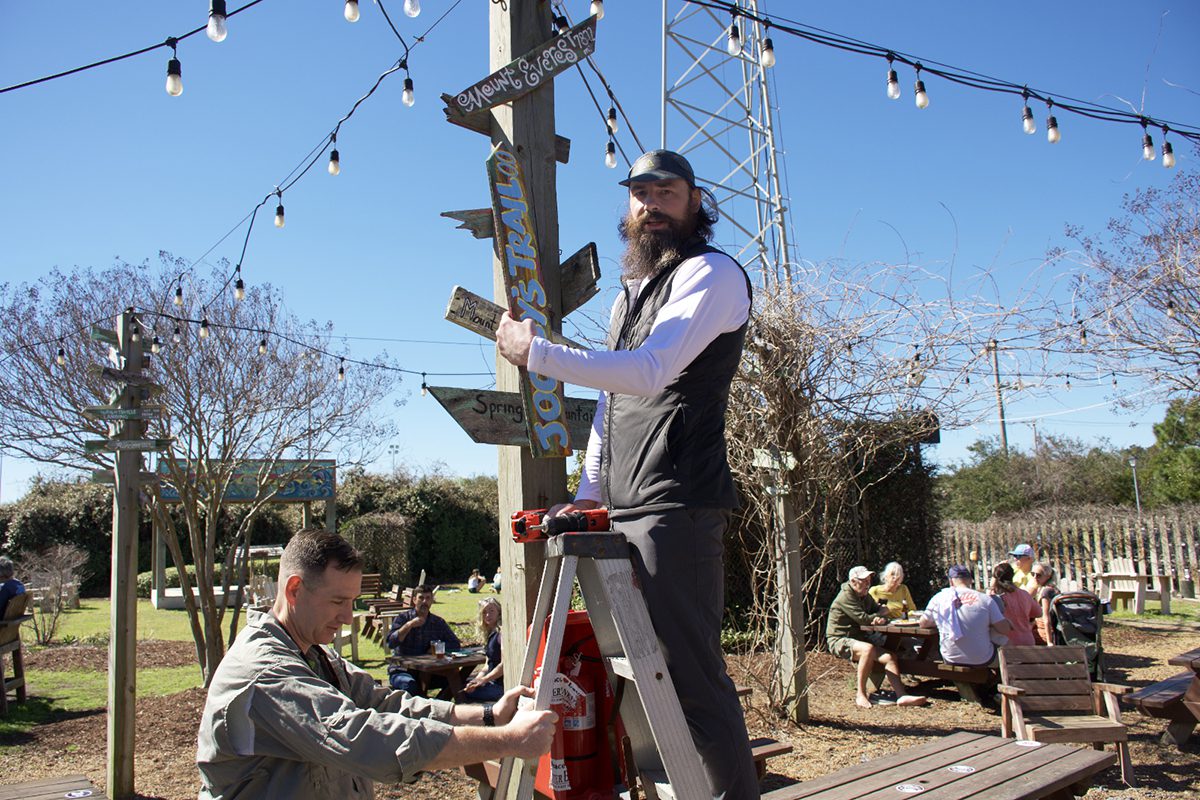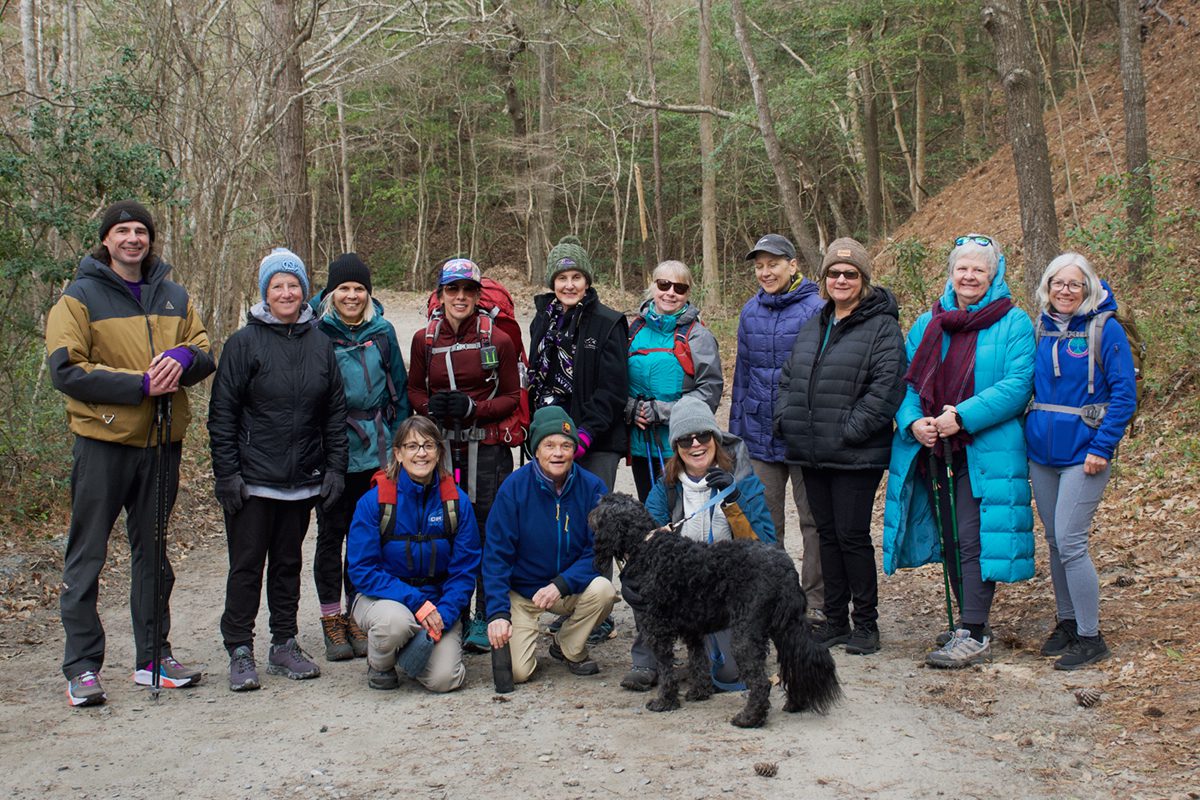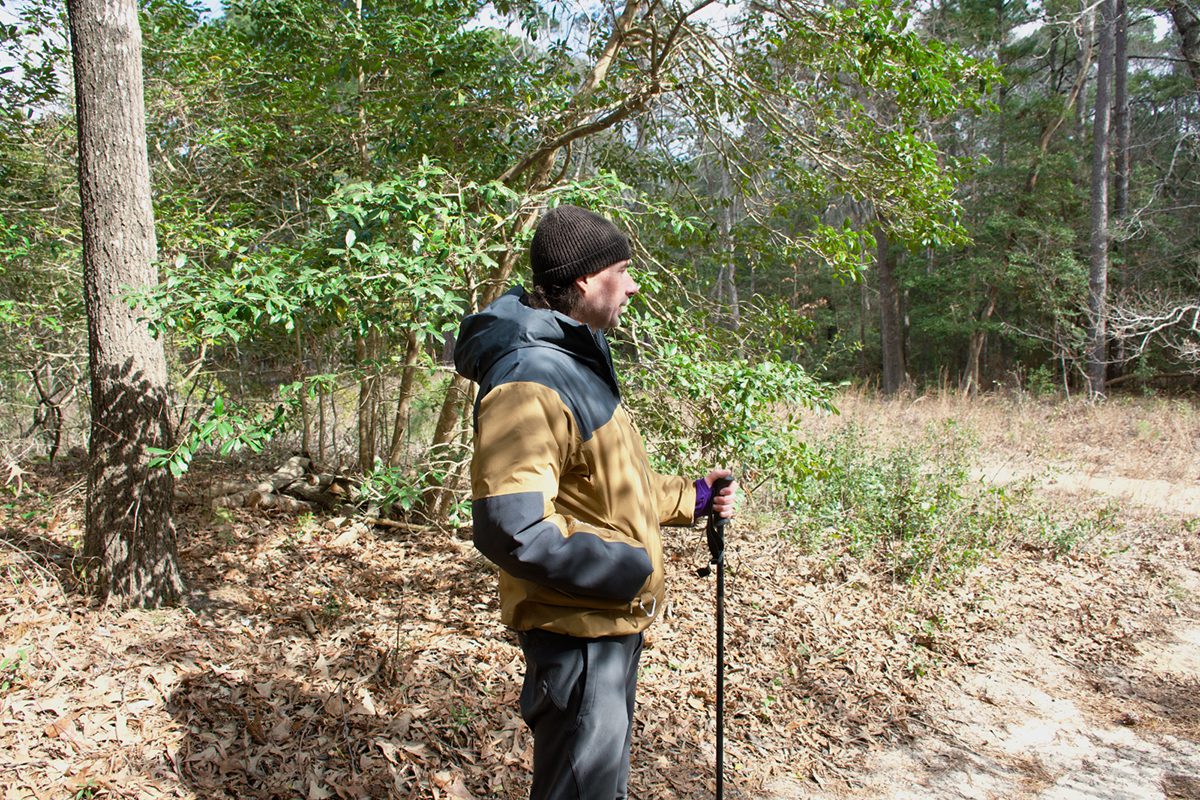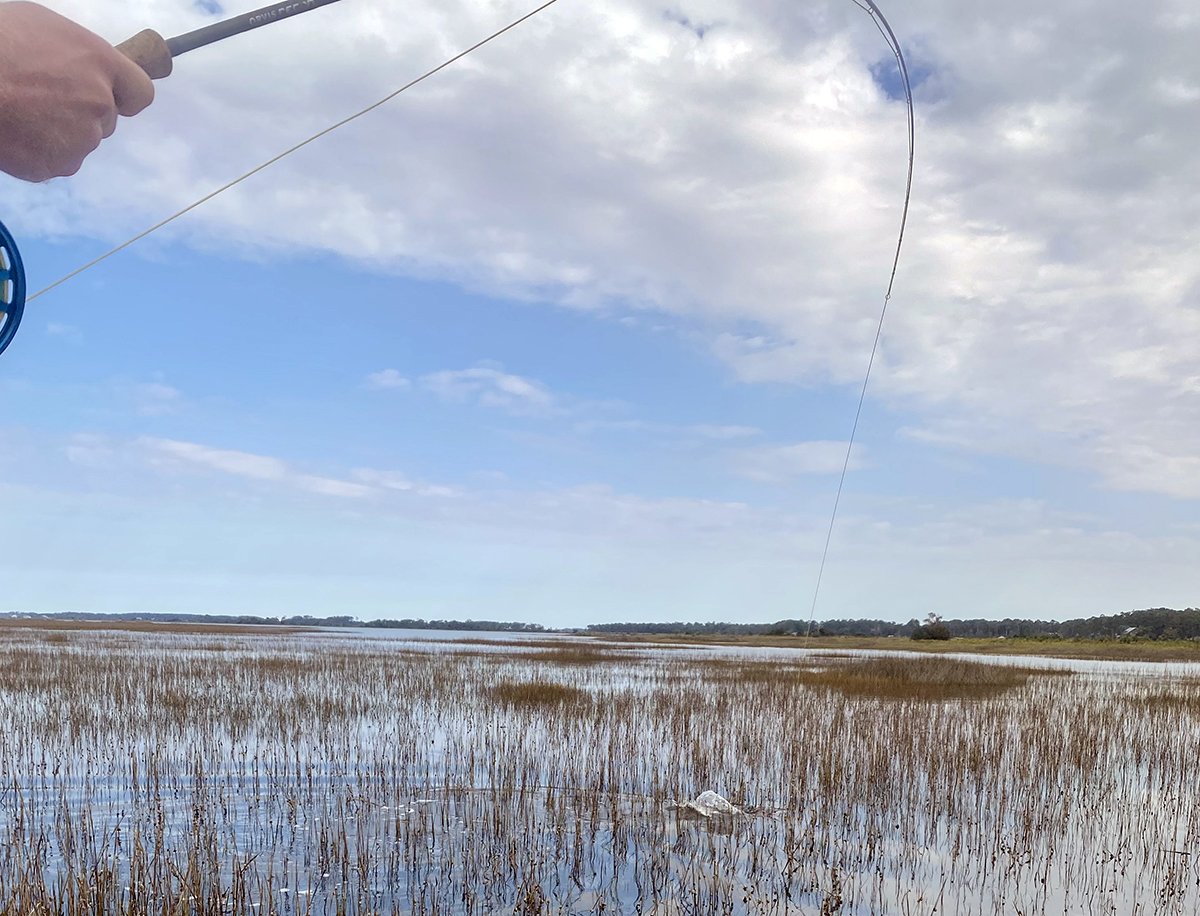
There’s a new trail to hike in North Carolina, appropriate for a state where legislation was passed making 2023 the Year of the Trail.
The 50-mile Jockey’s Trail does not (yet) have the panache or cachet of the more well-known Mountains-to-Sea Trail or perhaps the Appalachian National Scenic Trail. It is fashioned much like the Mountains-to-Sea Trail, with a combination of forest trails, roadways and some beach hiking, but this new trail is different.
Supporter Spotlight
It begins at the entrance of Jockey’s Ridge State Park, which is also the eastern terminus of the Mountains-to-Sea Trail, and heads due north to a 19th-century boundary marker at the border of North Carolina and Virginia, the unincorporated community of Carova.
But perhaps what is most unique about this new trail is how it came to be. The Jockey’s Trail was not the work of a committee or group of like-minded hikers. It was just Luke Halton and his vision of a through-trail from Nags Head to Carova.
Halton grew up in a Marine Corps family stationed in North Carolina. He graduated from Catawba College in Salisbury in 2001 with a degree in information systems. It was at Catawba that a focus of the school’s program stuck with him.
“One of their their major efforts for all their students — they actively promoted lifelong learning,” he said. “That is something that has stayed with me.”
The idea for the trail originated from more than one experience Halton had over the past few years. The COVID-19 pandemic, he readily offered, played an important role, although, he also noted, he was just ready for a change – and to take a hike.
Supporter Spotlight
“For me with COVID, I just wanted to be outside. I didn’t want to be locked down. And I just started the Mountains-to-Sea Trail,” he recently told Coastal Review. “I was just going to do a week or two, but I just kept going.”
He found that, much like for other through-hikers, the trek was just one part of a larger experience.
“Somebody doing a through-hike, a lot of times, is looking for a change of lifestyle or an escape or a restart. And that was kind of the same thing for me,” he said.
Then he got a message from a friend who was getting married in Spain. Halton was still on the Mountains-to-Sea Trail, but, “There was no way I was going to miss the wedding.”
In a twist of fate, pandemic travel restrictions created time for Halton to explore the trails of Europe.
“That was absolutely awesome,” he said.
When he left for his friend’s Madrid wedding, he could not fly directly to Spain. He could, however, fly to Ireland, spend a month there, and then continue on to the wedding. And there in Ireland, he encountered a remarkable trail system.
“In Ireland, there’s hundreds, if not thousands, of trails. They’re known for being hillwalkers,” he said.
His hiking took him across the Wicklow Mountains south of Dublin to trails that crossed the island to the Atlantic.
In Spain, there was the wedding and then more hiking, this time on the Camino de Santiago, a group of trails that radiates out like the spokes of a bike wheel, covering almost the entirety of the Iberian Peninsula.
What was particularly compelling, Halton said, was the communal nature of sharing the experience of the trail — having a place to stay every night and reflecting with other hikers what their day was like.
“Just meeting all these people staying at the same place every night. Maybe seeing some again, maybe not. That was an unbelievable experience,” he said.
When he returned from Europe he finished the Mountains-to-Sea Trail, got to Jockey’s Ridge State Park and decided to move to the Outer Banks because he felt there was unfinished business.
“I came out here (to the Outer Banks) because I was curious about why the Mountains-to-Sea Trail didn’t go all the way from Jockey’s Ridge to the Virginia border. That’s pretty much it,” he said.
There were some important lessons from the European experience that Halton brought back with him. One, that there is a communal feeling among long-distance hikers and through-hikers, Halton observed, something he described as, “a real hiker community.”

That community is on full display on a cold morning in early March as a dozen or so women of the OBX Women’s Adventure Club and Halton gather at one of the Nags Head Woods trails. They are there to support club member Stephanie Anderson who is doing a final warmup hike before taking on a through-hike of the Appalachian Trail.
“I can’t remember how or why we messaged each other,” Halton said. “But as soon as we started communicating, we automatically connected because she’s doing the Appalachian Trail.”
Some of what he learned in Europe, though, is difficult to apply to the Outer Banks. For example, the concept of a hostel or common meeting place at the end of each day’s hike does not exist along the Jockey’s Trail. Although, Halton pointed out in his discussions that there is still work to be done on lodging for the hike.
One important lesson he learned and has applied is to keep each day’s distance manageable.
“All the mileage is under 16 miles,” he said. “That 16-to-20-mile range, that’s when you start getting blisters and fatigue. You want to enjoy this; you want to take your time and be able to stop because there is going to be so much to see.”
An online aerial video of the trail uses Google Earth to show the route and some of the highlights, including some of the most iconic Outer Banks landmarks.
The trail includes a hike past the Wright Brothers National Memorial. The second day includes an easy trek through the Audubon Pine Island Sanctuary. The third day ends at the Currituck Beach Lighthouse in Corolla. And along the way, there is a scenic segment through Nags Head Woods.
The most difficult stretch is probably the 13 miles from the Currituck Beach Lighthouse to the state line boundary marker. That stretch also includes a considerable amount of beach hiking along the way to Carova. But that is also the realm of the Corolla wild horses, giving hikers a popular wildlife attraction to look forward to.
For Halton, who founded The OBX Way, a nonprofit that made it easier for him to place signs for the route and work with state and local governments, the Jockey’s Trail represents numerous ways to enjoy the coastal outdoors.

The trail can double as a bike route, although the last 11 miles on the Carova beach requires fat tires. It is also a trail that allows hiking at any pace.
Someone asked Halton early in the process of creating the trail about the record time for hiking it, and since to the best of his knowledge, he had been the only one to have completed it, he pointed out his four days were both the fastest and slowest times.
Most importantly, though, Halton sees the Jockey’s Trail as a way for hikers to experience some of the joys of being on a trail for few days without having to lug a 30- or 40-pound pack and everything that goes with it.
“If somebody has dreamed of doing a through-hike, but just never had a month or so to get away for days, (the Jockey’s Trail) gives you a real taste of what a through-hike is like without excessive logistic challenge,” he said.








